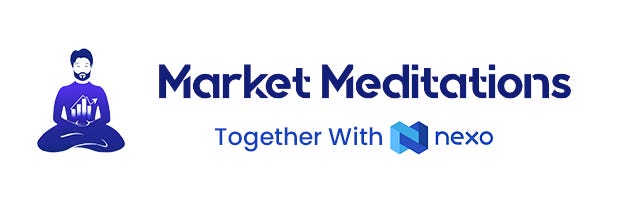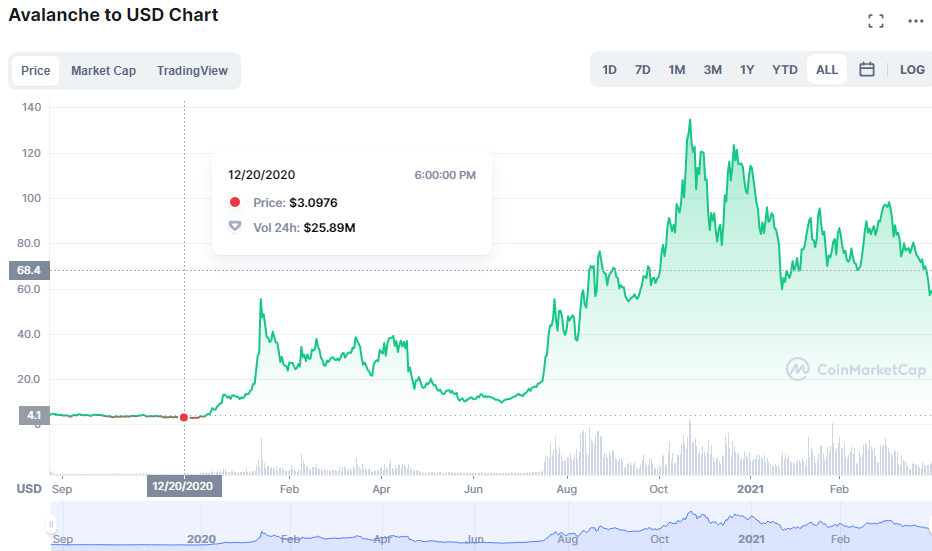🧘♂️Tokenomics For Beginners
Market Meditations | May 3, 2022
Dear Meditators
We’re all about giving people the tools they need to build life-changing wealth.
A deep understanding of tokenomics is one of those tools.
When mastered, it can be a game-changer when it comes to identifying the crypto projects and tokens that are going to succeed.
Equally important, it can help us to identify red flags! Projects that lack sufficient security or are just straight-up rug pulls.
Read this article carefully. It will help you a lot.
Today’s Meditations:
- Tokenomics 101: Part 1 of our Series!
- Yuga To Be Kidding Me: Latest on Yuga Labs
- Fantom of the Price Crash: Get Up to Speed with FTM
Nexo offers a simple, secure way to build your crypto portfolio.
Sign up Now & Get $100 in BTC!
⏰ Top Headlines
- Fed Meeting Decision Looks Baked, But Outlook Is Far From Certain
- Kraken opens waitlist for forthcoming NFT platform
- EU Commission report suggests rethink of regulatory approach to DeFi
- CoinShares reports drop in earnings amid crypto market slump
? Tokenomics 101
Tokenomics can grant insight into a team’s motives, help to contextualise future price movement, give alpha for early action or even predict the likelihood of a rug pull.
This information is typically found in whitepapers, github repositories, Medium articles or direct links on webpages or social media. If no tokenomics are published anywhere, it should be considered a red flag.
This week we cover utility, deflationary mechanisms, and initial offerings – three of the most important areas you need to know when approaching a new project.
Why Am I Supposed To Do with This? ??♀️
Utility, utility, utility.
Identifying functions of the token indicates the strength of a project’s fundamentals. Holding tokens like Baby Doge may prove profitable to some lucky investors, but with no utility beyond speculation, it’s statistically less likely to succeed in the long term.
- Solana’s ecosystem is filled with relevant use-cases. Aside from the organic demand created from transaction fees, NFTs, DeFi and more decorate the trophy hall of the Solana network.
Scrutinise ecosystems, staking opportunities, transaction fees, marketplaces, and other reasons to need the token.
Full of Hot Air? ?
Deflation is more than just a Fed buzzword.
Some projects include a plan for removing tokens from circulation. This is particularly important for inflationary tokens with no cap, but plays an important role in most cases. Inflationary tokens will see their prices driven into the ground without deflationary mechanisms in place.
- Two of the most common methods are burning and incentivisation.
- Burning is the process of permanently removing tokens from circulation. This is done by sending tokens to a burn address, or an address from which they are irretrievable.
- Incetivisations are methods employed to entice users to hold tokens over a long period in order to remove them from circulation.
- Ethereum’s EIP-1559 upgrade began burning 70% of gas fees charged when it was launched. This measure was put in place because there is no limit to the total number of coins that can be produced. It should be noted that while Ethereum does not limit the total supply of ETH, the network does limit production of 18 million coins per year.
Examining deflationary mechanisms uncovers how projects plan to handle an increasing supply. Acquaint yourself with how projects plan on managing token emissions. If it’s inflationary with no way to stymie the creation of tokens or tie up liquidity, consider walking away.
Wen Token? ?
The battle cry of Apes everywhere.
When a project’s token becomes available, it usually does so through an initial offering of some kind.
- IEOs and IDOs are listed directly on centralised and decentralised exchanges, respectively. Some offerings require whitelisting certain addresses to be eligible for purchasing the token.
- The nuance of initial offerings is a deep topic too robust for coverage here. As it relates to tokenomics, the timeline of a token’s initial offering is the primary concern.
- Avalanche’s ICO offered tokens at $.50 and $.85, depending on investor level and parabolically rose relatively soon after conclusion.
Use initial offerings to examine price history or anticipate upcoming releases. Participating in project Discord and Telegram channels are popular ways of getting whitelisted for these events.
Don’t sleep on this due diligence, or you might be rudely awakened with a rug being pulled out from under you.
Want More Tokenomics Information? ?
Next week we continue our Introduction to Tokenomics with a look at:
- Vesting
- Distributions
- Community Assessment
And much more!
If you want to receive Part 2 of our Tokenomics article and loads more crypto information, guides and analysis, make sure you’re signed up for our free newsletter.
⛽ Yuga To Be Kidding Me
Since Yuga Labs launched the mint of the Bored Ape Yacht Club just over a year ago, the founders have been building an empire and the holders have enjoyed a rocket ride in price and perks – but not everyone’s happy:
- Yuga Labs are aiming for the ecosystem trifecta: NFTs, governance token, and metaverse. After launching ApeCoin six weeks ago, their latest step was to open the public mint for land plots in “Otherside”.
- The metaverse is being developed with Animoca Brands, the developers of Sandbox. A teaser video was released in March, which suggested compatibility with a range of other (pricey) NFT collections, such as Meebits, World of Women, CryptoPunks and Cryptoadz.
- Land plots were sold at 305 ApeCoin each, equivalent to ~$6000-7000. Based on the mint price and secondary market trading Yuga Labs raised about $300 million in 24 hours!
- There was naturally a surge in ApeCoin purchases at the end of April, with the price peaking at ~$26. It has since crashed 40% post-mint, leading to this wry observation from Cobie.
- Minters also paid ~$100 million in gas fees due to network congestion, leading to an apology and a promise to refund users whose transactions failed. One commentator noted that three simple gas optimsations in the minting contract could’ve saved ~80% of fees.
Having generated a lot of attention this past year, Yuga Labs are no doubt doing great things for the space. But the biggest winners are the original BAYC holders, with mints like this reinforcing the notion that it is mainly the already-wealthy that continue to reap the benefits.
? A Highly Illiquid Whale
Roosh is the largest whale on Fantom and is responsible for the recent dump with FTM losing almost 30% of its value since 29th April.
- Roosh deposited $50 million worth of FTM to the Scream lending protocol and borrowed against their assets (this is a collateralised loan).
- Using the borrowed funds Roosh brought large amounts of SOLID and DEUS tokens and locked them up for 4 years.
- Locking the tokens made Roosh highly illiquid. This means that they would not have free capital to repay their collateralised loan if they got close to a liquidation price.
- As we entered a macro risk-off climate and the entire market started to lose value, this is exactly what happened.
- The price of FTM began to fall which pushed the health rate of Rooshs’ loan closer to 1, leading to their position being liquidated.
- On Scream when an individual’s loan exceeds what their collateral can support, fractions of their positions are sold.
- The Scream protocol took Rooshs’ collateralized FTM and began selling it on the open market in order to retrieve enough money to repay the debt owed.
- According to DEXScreener, the largest FTM pool is WFTM/USDC which currently has $92 million in total liquidity. This is a problem because trying to liquidate large sums of capital in a pool this small created liquidity issues which caused the asset price to fall.
Rooshs’ actions have crashed the FTM network and caused the token price to dump. According to their wallet, they are not at a high risk of further liquidation but should the market continue to dump a similar event could unwind.
- After receiving overwhelming support for Bitcoin purchases through bank accounts, Banco Galicia and Brubank, Argentina’s largest private banks, will begin allowing customers to buy crypto. – Cointelegraph
- Dubai crypto regulator VARA becomes the first regulator to enter the metaverse, establishing a foothold in Sandbox – Zhu Su
We’re Watching
? Did you enjoy today’s newsletter? This survey is your chance to tell us how we can improve the product for you. Link here.
??♂️✍️ Stories in this newsletter were written by Isambard FA, Kai.A, Nick T., Max P., Kimia K., Ellen B. and Koroush AK. Graphics were produced by Ellen B.
Not financial or tax advice. The content in this newsletter is for informational purposes only. Nothing in this email is intended to serve as financial advice. We are not financial advisors. Every investment and trading move involves risk. Do your own research when making a decision. See our important security disclaimers here.
Disclosure. Some of the links we’ve included are affiliate, they give you rewards and discounts and earn us a commission. Additionally, the Market Meditator writers hold crypto assets. See our investment disclosures here.















